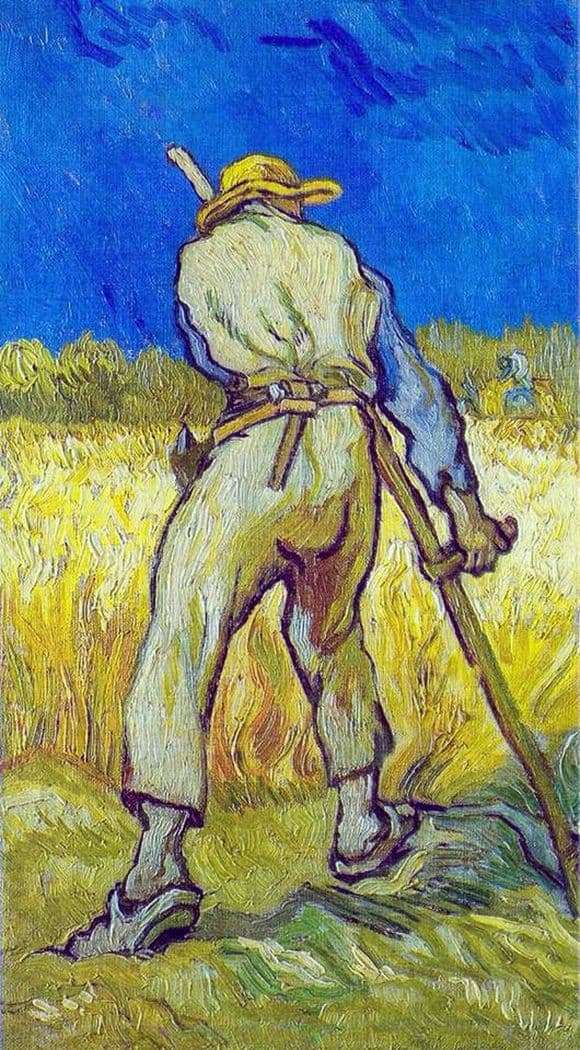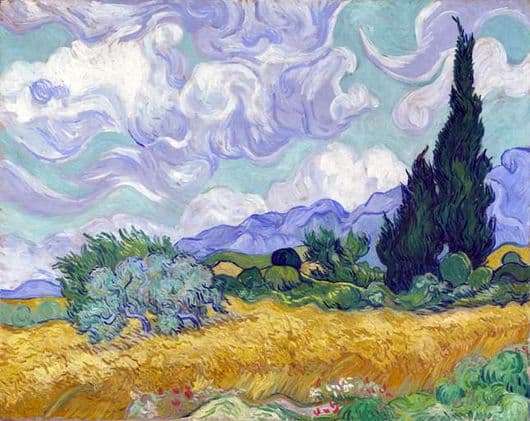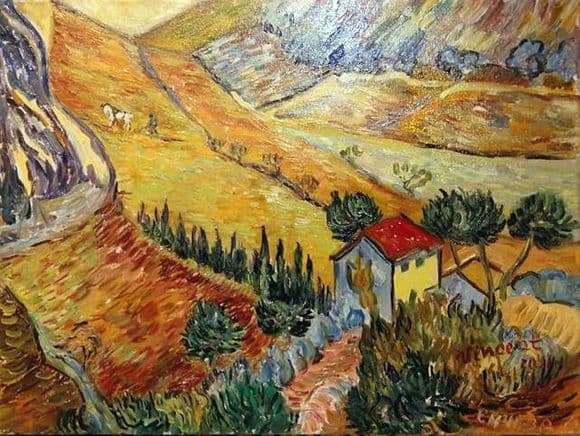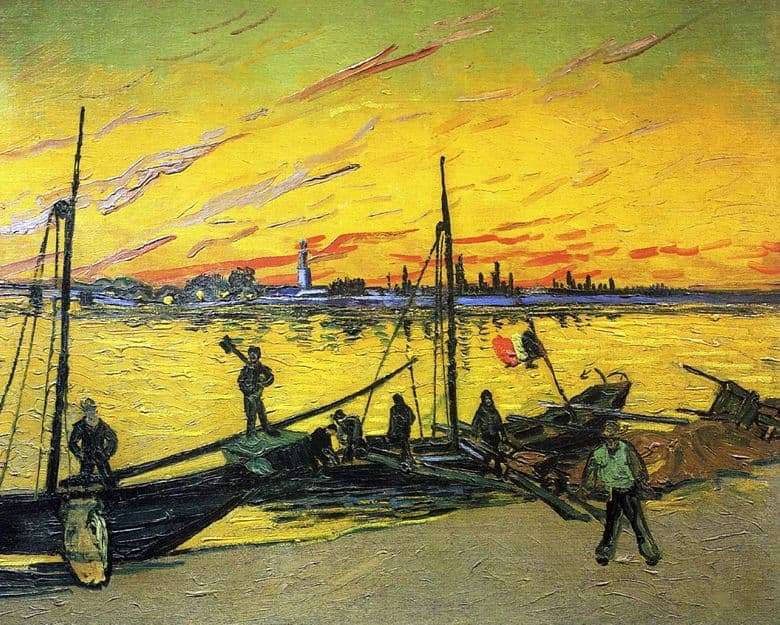
1888; canvas, oil; 73.0×92.5; Kröller-Muller Museum.
The period of life in Arles is characterized in the works of Van Gogh by an abundance of landscape painting. In his paintings, he tried to capture the beauty of the surrounding nature, which does not need an artificial preening.
The canvas “Haystacks in Provence” is compositionally simple and captivates the eye with its unpretentiousness. A rich yellow color fills the picture with a warm summer shine. Two large stacks of harvested straw are written in yellow, occupying a central place on the canvas. They seem to dominate everything else, their juicy yellowness is here and there diluted with arrows of green grass, accidentally put in shovel.
Yellow is the color of the field where stacks are stacked, the road in the background leading to the village. Yellow is a large two-story house and reflections on the roofs of huts, located further on the horizon. The contrast creates a blue summer sky in the sky, reflections of violet visible in wooden buildings on the ground.
Small details enliven the landscape even more: a woman with a bucket and a straw hat wandering along the road, the stairs left by the workers at the second stack, clothes thrown on the straw. These traces of human presence remind that the pastoral picture of rural nature was created not only to admire it. Behind all this is the work of people for whom all the magnificence surrounding them is not a work of art, but routine.
Description of the painting by Vincent van Gogh “Haystacks in Provence”







